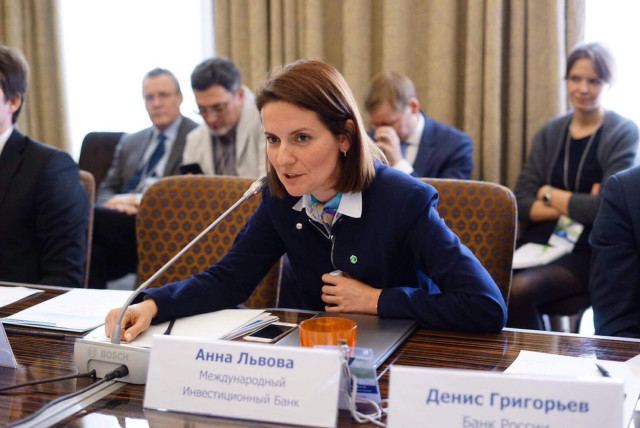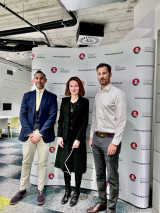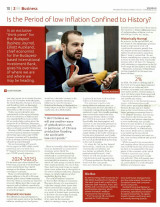Russian Business Seeks Green Finance
Source: Независимая Газета
Russia’s capital market for ecological projects lags well behind the best global practices
International and Russian experience in green financing were the focus of discussion at a recent round table event held by ICC Russia’s Commission on the Economics of Climate Change and Sustainable Development. According to the statistics presented at the forum, the Russian market currently lags well behind global trends. Nevertheless, there are also positive signals: major banks are not holding back from investing in green projects, and there is interest in the issue of green bonds.
Discussion moderator Sergei Chestnoi, adviser to the general director of RUSAL, pointed out that the world is moving to a cleaner, low-carbon economy and a more responsible relationship to the principles of sustainable development. The achievements of the last year are impressive: worldwide green bonds worth $155.5 billion have been issued – an all-time record sum for the market. Anna Lvova, head of the Department of International Relations and Information at the International Investment Bank, reported that growth exceeded all expectations, totaling 78 percent by comparison with 2016.
According to Ms Lvova, in 2017 there were 1,500 issues of green bonds. Setting yet another record, the largest one-time issue was worth $10.7 billion. Forecasts indicate that this year the total volume of issues will be $250–300 billion, possibly reaching $1 trillion by 2020.
Last year was also a milestone for several trends. For example, three sovereign issues took place, while developing countries are increasingly moving into the spotlight: apart from France, Fiji and Nigeria issued green bonds in significant volumes given the size of their economies. “In 2018 people are going to be keeping a very close eye on this market,” said Lvova. “A huge amount of work is being done at state level: in India a whole series of standards are being developed, and China is continuing to improve its regulatory environment. In 2018 we expect to see an upsurge in sovereign issues.”
Meanwhile, the development of universal international standards for green bonds continues. Last year saw the creation of a huge number of specialized commissions for the development of the green financing market. Yekaterina Levitanskaya, IFC’s senior financial sector adviser, said that regional standards are in the process of being actively developed (for example, in the ASEAN countries) and incentive-based regulation is being implemented (in particular, tax breaks are being introduced). The market is also witnessing a diversification of instruments: an example of this is Malaysia, which has issued green Islamic bonds (sukuk).
For now, the situation in Russia is developing slowly. The Central Bank’s Denis Grigoryev, head of the Department for the Development of Infrastructure Organizations and Instruments of Financial Markets, pointed out that although 2017 was designated a “Year of Ecology” in Russia and there was a general anticipation that somebody would issue green bonds, nothing happened. The market is estimated at 1–1.5 trillion rubles ($17.5–26.1 billion): this represents only those projects that companies are prepared to develop themselves and which require financing until 2022. According to Grigoryev, market players are calculating the potential volume of the green bond market, and the results of this work will be presented by the end of the summer.
As Grigoryev noted, there are issuers in the country, but many questions remain about the investor base: “Green bonds are issued around the world for specific investors who have declared their devotion to principles of sustainable investment and ecological and climate projects. In Russia there are separate market players who have made a commitment to invest responsibly, but they are in a minority and they do not occupy a very active position,” he said. The Central Bank is ready to map out all the necessary standards and hold negotiations (one topic of discussion is who might be able to serve as a potential verifier of green bond issues), but the question remains: what should come first – the bond issue itself or incentive measures? For now, the regulator has taken a wait-and-see attitude.
However, a working group on ecology set up by the Russian government’s Expert Council has developed a concept for the creation of a “green bank” in Russia, as the head of the group Rashid Ismailov and Vnesheconombank representative Denis Parlikov revealed. The assumption is that it will be financed with funds from the state budget, credit from international development institutions and issues of green bonds. The bank should be state-run, in order to source credit at the sovereign borrower rate. According to expert estimates, the bank’s credit portfolio could total 600–730 billion rubles ($10.5–12.7 billion) – these funds are to be allocated to projects for the introduction of the best available technologies, renewable energy sources (RES), waste recycling, green construction, and ecological company programs.
Russian banks already have experience in financing RES projects. Thus, Gazprombank has been working with the renewable energy sector for over five years already, according to Ilya Devichensky, head of the energy directorate at the bank’s Department of Project and Structured Finance. The bank is working with Hevel Group to run a solar power project, which has already exceeded 150 MW. The bank has allocated 20 billion rubles ($350 million) for a period of more than 10 years. The wind power project will have a capacity of 600 MW, the loan exceeds 60 billion rubles.
As Devichensky explained, banks see numerous risks in renewable energy: there is a very limited circle of developers in Russia, there are few experienced qualified contractors, and there is no local market for equipment production. The Head of VTB’s Structured Finance Department Sergei Ulyukayev highlighted the interest-rate risk: the calculation of the price for capacity under RES capacity supply agreements is tied to the yield of long-term federal loan bonds, while financing is attracted at the debt market rate. In order to insure the investor, VTB has developed a separate solution: an interest-rate swap.
The speakers at the round table noted that despite all the risks and the lack of support on the part of the regulator, foreign partners have taken an interest in Russian green projects, and the number of investors on the market is growing. By this summer, according to Central Bank forecasts, there will be a certain clarity regarding green bonds. Consequently, business is taking a growing interest in the topic, and while currently the Russian green finance market lags substantially behind the markets of even some developing countries, the gap is going to narrow.


